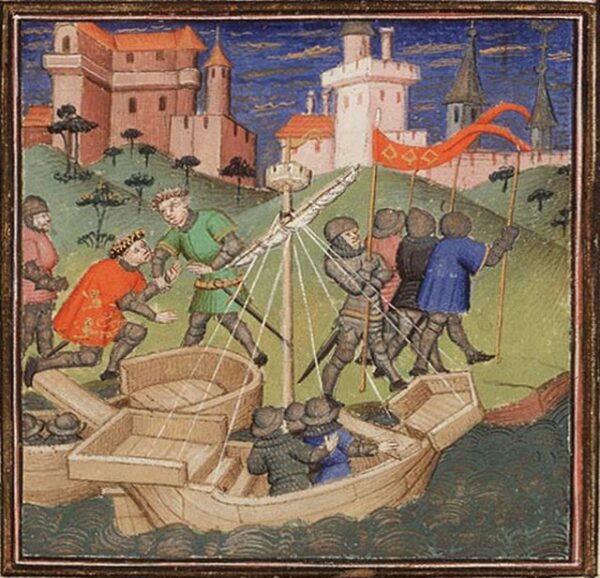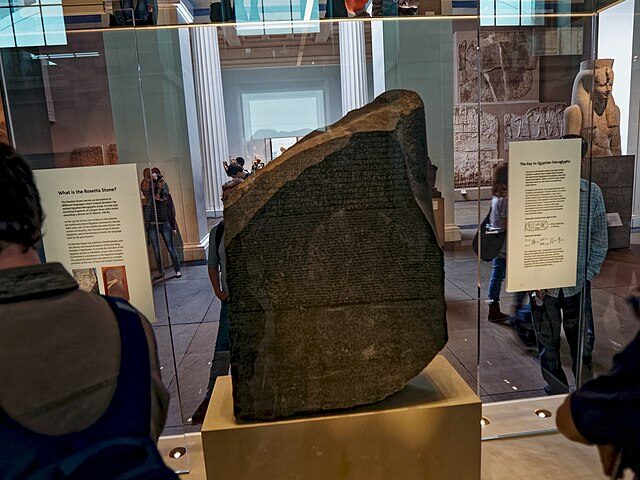On September 27, 1066, William the Conqueror set sail on a trip that would change the course of world history, leaving Normandy and sailing toward Britain. He would soon face the most important battle in British history before World War II and be seated on the English throne by the end of the year.
Brittanica writes that “the trip was not without incident: William’s ship lost touch with the rest of the fleet, but he calmed his crew by supping as if he were at home, and contact with the other ships was made not long after. The following morning he landed, took the unresisting towns of Pevensey and Hastings, and began to organize a bridgehead with 4,000 to 7,000 cavalry and infantry.
William’s forces were in a narrow coastal strip, hemmed in by the great forest of Andred, and, although this corridor was easily defensible, it was not much of a base for the conquest of England. The campaigning season was almost past, and, when William received news of his opponent, it was not reassuring. On September 25 Harold had defeated and slain Tostig and Harald at Stamford Bridge, near York, in a bloody battle with great losses on both sides, and he was retracing his steps to meet the new invader at Hastings. On October 13, Harold emerged from the forest, but the hour was too late to push on to Hastings, and he took up a defensive position instead. Early the next day, before Harold had prepared his exhausted troops for battle, William attacked. The English phalanx, however, held firm against William’s archers and cavalry. The failure to break the English lines caused disarray in the Norman army. As William’s cavalry fled in confusion, Harold’s soldiers abandoned their positions to pursue the enemy.
William rallied the fleeing horsemen, however, and they turned and slaughtered the foot soldiers chasing them. On two subsequent occasions, William’s horsemen feigned retreat, which fooled Harold’s soldiers, who were then killed by their opponents. Harold’s brothers were also killed early in the battle. Toward nightfall the king himself fell, struck in the eye by an arrow according to Norman accounts, and the English gave up. William’s coolness and tenacity secured him victory in this fateful battle. He then moved quickly against possible centres of resistance to prevent a new leader from emerging.”
William’s victory at the Battle of Hastings solidified his claim to the English throne, as he had successfully defeated King Harold II and eliminated a major rival. His coronation as King of England on Christmas Day of 1066 marked the beginning of a new era.
William’s rule was marked by the introduction of feudalism, a complex system of land tenure and obligations that restructured the social fabric of England. The Normans, who supplanted the Anglo-Saxon nobility, established themselves as a new ruling elite, fundamentally altering the power dynamics within the realm. This transformation facilitated centralization of authority and enhanced royal control, culminating in the compilation of the Domesday Book in 1086, a seminal record of land ownership that facilitated taxation and governance.
The linguistic legacy of the Norman Conquest is equally noteworthy. The convergence of Norman French and Old English gave rise to Middle English, a linguistic bridge that links the past to the present. This linguistic fusion, reflected in the writings of Chaucer and others, has enduringly shaped the English language. Moreover, Norman architectural influences, embodied in grand castles and cathedrals, are a testament to the Normans’ indomitable spirit and enduring contributions to English culture.






